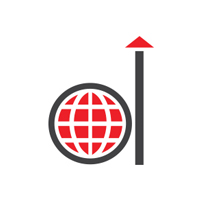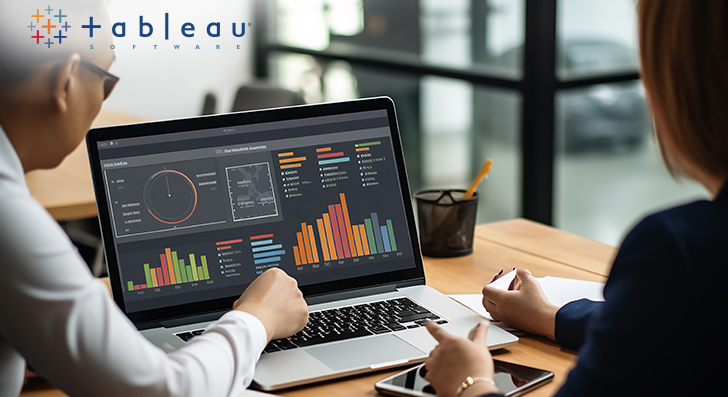Data, often referred to as the new oil, fuels decision-making, mitigates fraud, drives innovation, predicts market trends, and provides a competitive edge. However, raw data alone, no matter how powerful or vast, is not enough; it must be transformed into meaningful and actionable insights that tell compelling narratives. This is where the need for data storytelling comes into play. Data storytelling is not just about presenting numbers or facts, it’s about weaving a narrative that drives data-driven decision-making.
At the forefront of this revolution stands Tableau, a powerful data visualization tool, revolutionizing the way businesses interact with data by empowering users to create visually rich and interactive dashboards that transform complex data sets into clear and compelling stories. In other words, Tableau dashboard development bridges the gap between raw data into clear, interactive, and compelling narratives that drive decisions and inspire action. Furthermore, the key strength of Tableau lies in its ability to make data democratization a reality by integrating data from multiple sources, which is critical for identifying correlations and making data-driven decisions. With its intuitive interface and drag-and-drop functionality, Tableau allows users to identify trends, uncover hidden patterns and insights, and visualize data in ways previously unimaginable. Furthermore, Tableau provides users with the tools to transform meaningful insights into coherent and compelling stories. Now, let’s dig deeper to understand how to prepare raw data for storytelling.
The 5-Step Process to Prepare Data for Tableau Storytelling
Step 1: Data Collection
The first step in the process of preparing data for Tableau storytelling is data collection. This entails identifying all relevant data sources and gathering information that covers all necessary aspects. During collection, data can be sourced from a range of disparate sources, such as spreadsheets, APIs, databases, and online repositories. Each data source must be evaluated for accuracy and reliability to ensure the credibility of the information gathered, avoiding potential gaps that could lead to misleading or incomplete insights. Furthermore, paying attention to data complexity during collection ensures the information gathered at the optimal level for analysis. Overall, data collection not only provides a robust foundation but also sets the stage for all subsequent steps involved in preparing data for Tableau business intelligence and analytics, resulting in more compelling narratives.
Step 2: Data Cleaning
The next step for preparing data for Tableau storytelling is data cleaning. This step entails identifying and addressing issues such as inconsistencies, missing values, or duplicates within the dataset. Inconsistencies in data, such as different formats, dates, currencies, or units of measurement can hinder Tableau data analytics, requiring standardization to ensure uniformity. Similarly, missing values in data sets can lead to gaps in analysis, potentially resulting in incomplete or misleading insights, requiring strategies such as imputation to handle this challenge appropriately. Furthermore, data duplicity can distort data visualization and analysis by inflating counts or skewing patterns. Therefore, they must be identified and removed to ensure the dataset is consistent, accurate, and free from anomalies or errors. By thoroughly cleaning the data sets, users can not only enhance the accuracy but also improve the reliability of their visualizations, which in turn, leads to more compelling data narratives.
Step 3: Data Structuring
The third step for preparing data for Tableau storytelling is data structuring. This step involves organizing data into a tabular format with rows and columns that facilitate effective analysis and visualization. When structuring data, it is crucial to define clear and meaningful headers for each column since this makes data easy to comprehend and interpret. Furthermore, consistency in data types across each column is also pivotal during data structuring. Efficient data structuring also includes addressing any potential redundancy while ensuring that each row represents a unique record to avoid unnecessary duplication. Besides this, data structuring often entails categorizing data into groups or creating hierarchies, which can be useful for drill-down analysis in Tableau. By structuring data carefully, users can create dynamic and interactive dashboards that transform data into meaningful insights, thereby enhancing the overall effectiveness of the data storytelling.
Step 4: Data Transformation
The fourth step for preparing data for Tableau storytelling is data transformation. This step entails the transformation of raw data into a standard format by employing various processes such as normalization, aggregation, and data restructuring. During data transformation, it’s crucial to ensure data consistency and integrity and address any anomalies or discrepancies that might distort the visualization and analysis. Effective data transformation not only makes the data more understandable and accessible for analysis but also maximizes the capabilities of Tableau for crafting interactive and meaningful visualizations for compelling data narratives. In short, data transformation allows users to uncover hidden patterns and draw meaningful conclusions, making their narratives more impactful and easier to understand.
Step 5: Data Security
The final step for preparing data for Tableau storytelling is data security. This step entails implementing robust access controls that allow only authorized personnel to view or manipulate the data, thereby eliminating the risks of unauthorized access and potential data breaches. Another crucial aspect of data security is compliance with relevant data protection regulations, such as HIPAA, GDPR, and CCPA. Furthermore, anonymization or masking techniques can also be employed to sensitive information to safeguard individual privacy while preserving its utility for analysis and visualization. Overall, prioritizing data security can not only protect sensitive information but also ensure that data narratives crafted with Tableau are compliant with legal standards.
How Tableau is Shaping the Future of Data Analytics
Summing Up
As businesses are embarking on a transformative journey of data storytelling with Tableau, it’s important to note that the success of a business hinges on the quality of data preparation. By religiously following the steps discussed above, organizations can transform data into powerful narratives that drive actionable decision-making. If you are also planning to bring raw data to life, it’s strongly recommended to seek end-to-end consultation from a professional data visualization company that has rich prowess in transforming complex data sets into impactful visual stories using Tableau.





